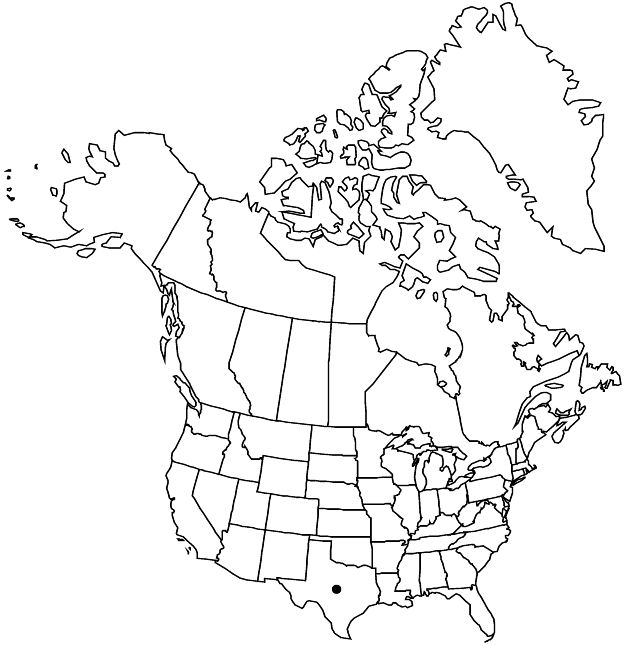Difference between revisions of "Cienfuegosia drummondii"
Bull. Torrey Bot. Club 37: 475. 1910.
FNA>Volume Importer |
FNA>Volume Importer |
(No difference)
| |
Revision as of 22:44, 16 December 2019
Plants from woody rootstock. Stems decumbent to ascending, sparsely puberulent to glabrate. Leaves: stipules subulate or lanceolate, 1–8 mm; petiole to 1/2 length of blade, glabrate (or puberulent distally); blade ovate to elliptic, 5–10 cm, ca. 1.5 times as long as wide, margins coarsely serrate, apex acute, surfaces glabrate. Pedicels 2–11 cm, without involucellar nectaries at apex; involucellar bractlets 8–10, lanceolate to spatulate, 6–14 mm. Flowers: calyx 10–20 mm, inconspicuously punctate, minutely puberulent to glabrate; corolla campanulate, usually with dark red center, 1.5–3.5 cm; staminal column pallid or dark red, apically 5-dentate; style pallid; stigmas 4 or 5, dark red. Capsules obovoid-obtuse, 4 or 5-locular, 8–14 mm, glabrous. Seeds 3–4 mm, inconspicuously hairy, hairs tightly appressed, usually tan or brownish. 2n = 20.
Phenology: Flowering winter–spring.
Habitat: Open areas, usually in heavy, often saline soil
Elevation: 30–100 m
Distribution

Tex., South America (Argentina, Brazil, Paraguay).
Discussion
In the flora area, Cienfuegosia drummondii is known only from the coastal areas of southern Texas.
Selected References
None.